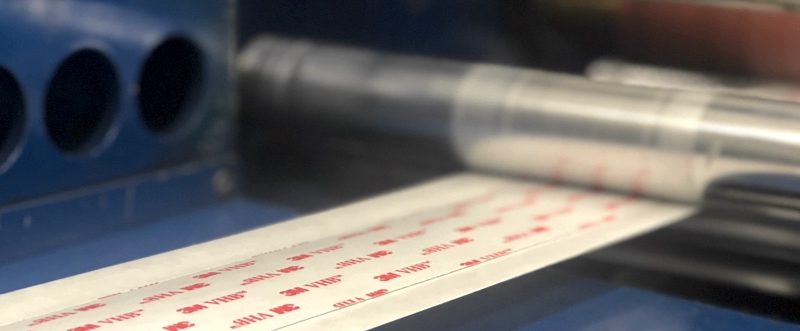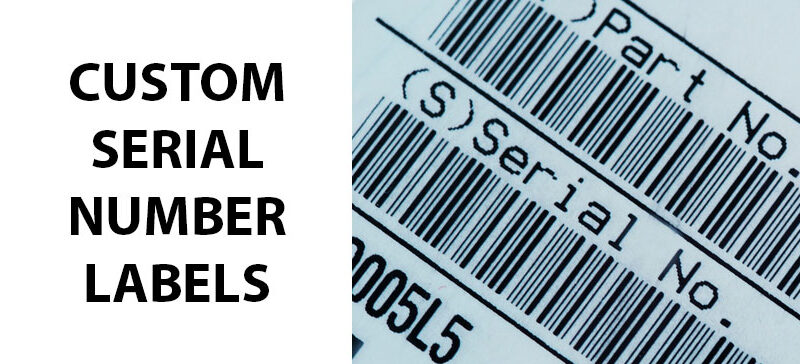Direct thermal printing is a printing technique that’s popular due to its cost-effectiveness and ease of use. With thermal paper in hand, you can print anything from receipts to labels, all without messy ink cartridges or constant toner changes.
So what exactly is thermal paper? And how does it work?
Direct Thermal vs Thermal Transfer
What Is Thermal Paper?
Thermal paper, also called heat sensitive paper, is a special type of paper that’s coated with a heat-sensitive chemical formula. Instead of relying on traditional ink or toner, thermal paper harnesses the power of heat to produce high-quality prints. When in contact with heat, the thermal paper turns black, or sometimes blue or red. The process is quick, clean, and efficient, making it a preferred choice for many businesses.
What Is Thermal Paper Used for?
The uses of thermal paper are many, which is why it’s popular in a variety of industries. Although limited in the number of colors it can produce, direct thermal printing on thermal paper results in crisp lines. Here are a number of thermal paper uses:
- Tickets: Whether it’s for a movie or a concert, most tickets are printed on thermal paper. The process is quick, which is especially beneficial when dealing with long lines in the box office.
- Receipts: Thermal paper is widely used for receipts, including at grocery stores, retail stores, gas stations, and restaurants. The receipts print quickly and are easy to read because of the crisp printing.
- Labels: In logistics and shipping, thermal paper is often used to create shipping labels, barcodes, and product labels.
- Medical imaging: In the healthcare industry, thermal paper is used in certain kinds of medical devices, such as ultrasound machines, ECG machines, and patient monitoring systems to produce instant reports and images.
Advantages of Thermal Paper
Heat sensitive paper is widely used because of its many advantages. Here are some of its advantages:
- Cost-effective: Thermal paper eliminates the need for consumables like ink and toner, making it a cost-effective solution for your business.
- Crisp lines: Direct thermal printing results in high-quality images and text with crisp lines. The printing is durable, ensuring that your tickets, receipts, or labels stay legible over time.
- Fast: When you’ve got a queue halfway down the block, the last thing you want is to wait forever for a ticket or receipt to print. Direct thermal printing happens very quickly, with no worry of smudging ink.
- Versatility: Heat sensitive paper isn’t just for receipts. It can be used in anything from tickets to labels.
How It Works with Labels
Heat sensitive paper works with labels in much the same way as it does with other types of printed goods. The only difference is that you’ll need to use thermal paper with an adhesive on the back.
In order to print thermal labels, you start by loading the paper into the print. The printhead heats the paper, and the heat sensitive chemical responds, leaving whatever text or design you’ve chosen. Because there is no ink, there’s no need to wait for the label to dry before use.
Thermal Paper vs Regular Paper
When it comes to direct thermal printing, not all papers are the same. You need a heat sensitive paper in order to print. Regular paper has one layer: paper. It’s usually made from wood pulp or a combo of wood pulp and other fibers. Regular paper can be used with many types of printers, but it won’t work with a direct thermal printer.
Thermal paper, on the other hand, has a few layers. The first layer is the substrate, which is paper. Next, a base coat is often applied. This helps ensure the text or image prints evenly and can also help it adhere to the paper. Thirdly, a chemical coating is applied. This is what responds to the heat and allows the paper to be printed on. In some cases, a protective coating is placed over the top to protect the receipt, ticket, or label from fading. Another optional feature is a back coating, which prevents the paper from curling up. In the case of thermal labels, an adhesive layer is applied to the back. A liner protects the adhesive until the thermal label is ready to use.
Possibilities
With so many uses, the possibilities are seemingly endless. While there are a lot of stock thermal transfer solutions out there, your business needs are anything but standard. Don’t settle for less than the customization and quality you deserve.
At Coast Label, we can create it in just about any shape or size–even special dimensions or tight tolerances to work with. We use only the highest quality of materials to manufacture it so that it works for your exact needs. We’ll help you engineer your thermal labels to ensure that they stick to the surface you’re working with–from LSE plastic or glass to wood and more. Whether you’re a retailer, logistics provider, or event organizer, we have the right solutions for your unique business.



